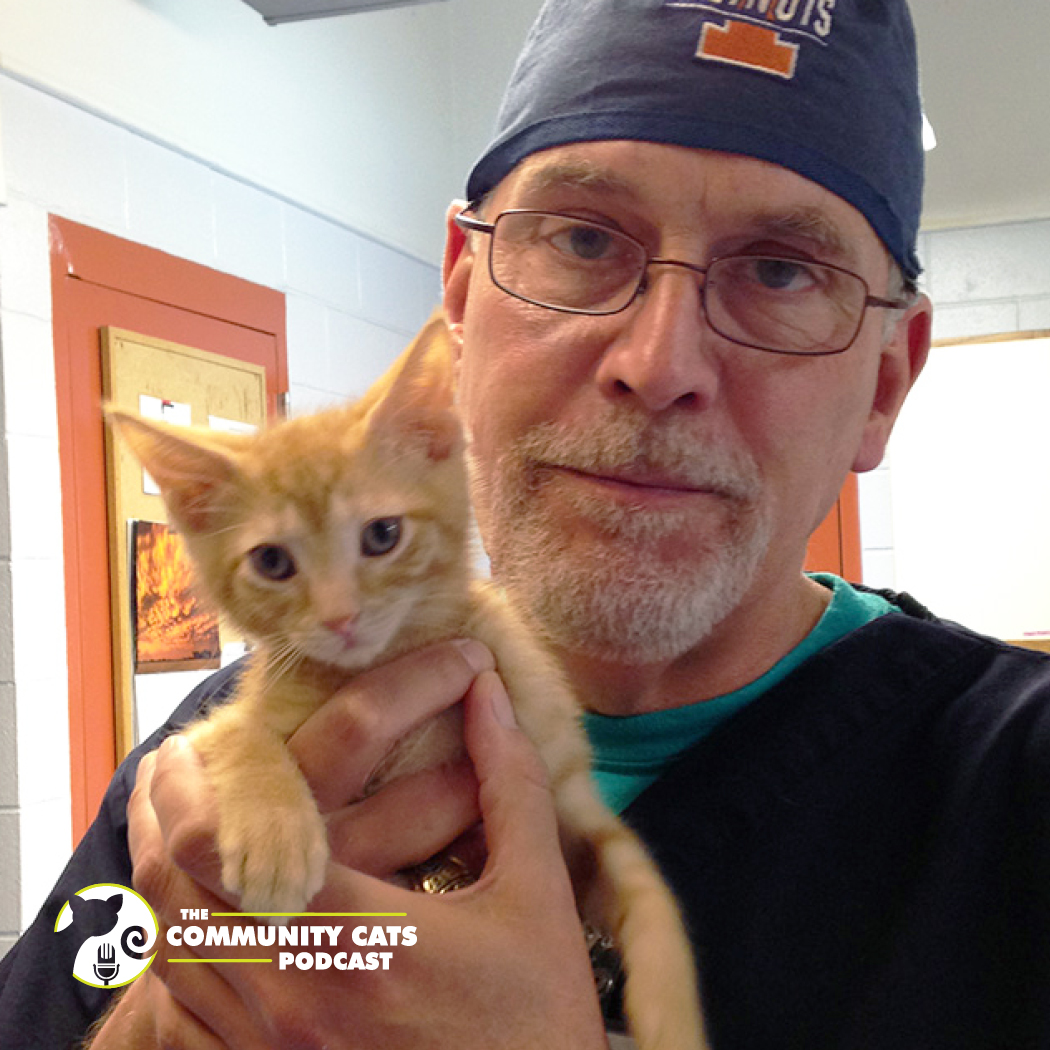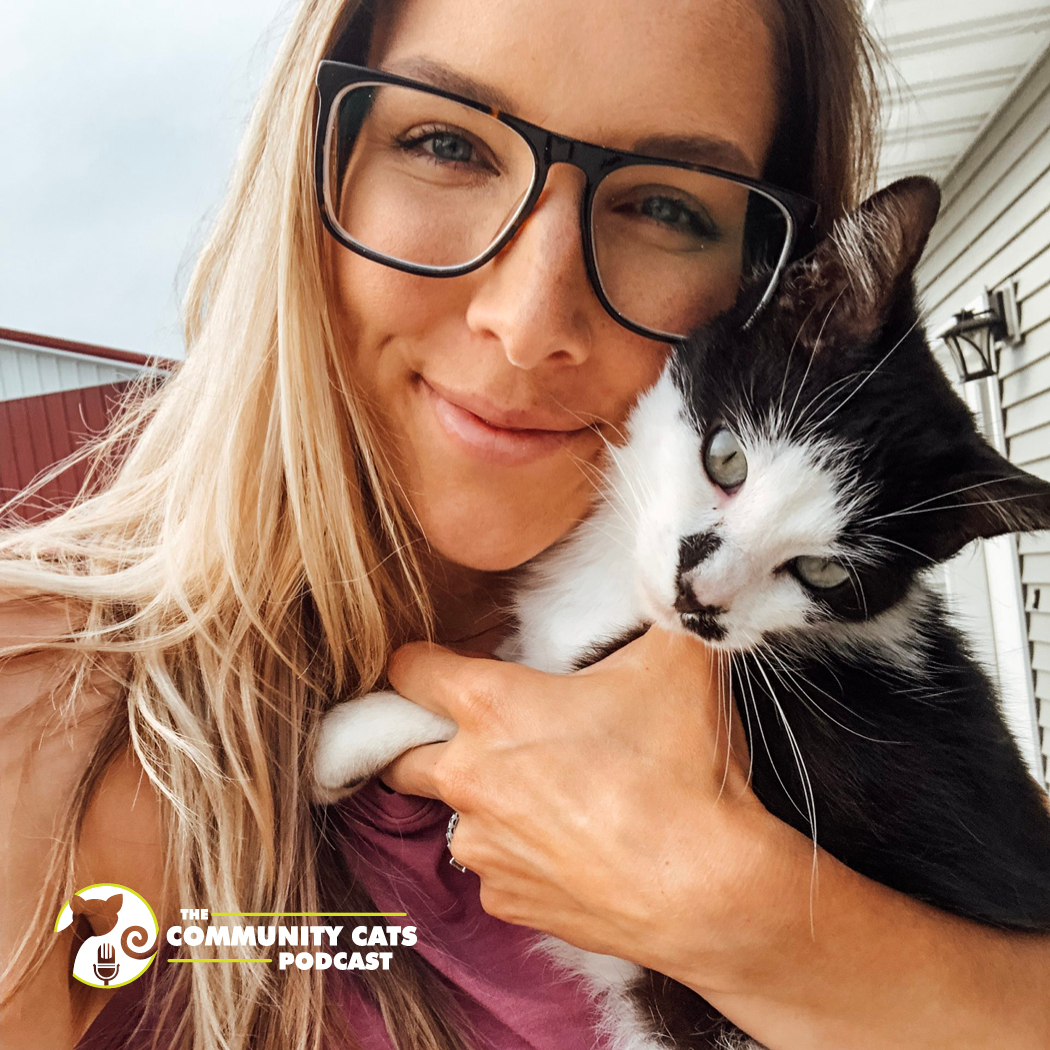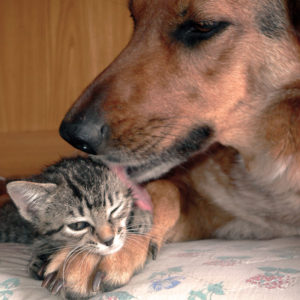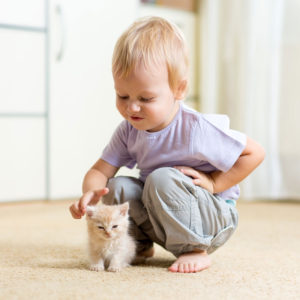
Dr. Bob Weedon, TLC PetSnip & Alliance for Contraception in Cats & Dogs
July 21, 2020
Carrie Lippert Gillaspie, Television & Podcast Host
July 28, 2020
Today’s guest post comes to us from Krista Beucler, Marketing & Communications Intern at Community Cats Podcast.
It’s kitten season and you may be thinking about bringing a new kitten into your family. Or maybe you stopped by the shelter for some entirely different purpose, or even “just to look”—and then found yourself leaving with a new kitten an hour later. Either way, it’s important to think about how the new kitten will fit into your family. Introducing the kitten to other cats, as well as the dogs, or children in your family is essential for a peaceful and happy home. Below we’ve put together some tips for making the introductions.
The first step is to set up your kitten room. When you bring your new kitten home, you’ll want to have space in the house reserved for her that has been cleaned (so it doesn’t smell like the other animals in the house) and has your kitten’s food, water, litter box, bed, and toys. Give her a few days to get used to the setup and gain confidence.
Then it’s time for a little exploration. Let your kitten out to investigate the rest of the house, while your other animals investigate the kitten’s room, or while your child isn’t home. This will give the kitten a chance to get used to the smells of the other animals or people and to familiarize herself with the house. Meanwhile, your other cats or dogs can get to know the kitten’s smell—just don’t let them use the kitten’s litter box! You can also swap one of the kitten’s blankets with your other cat’s or dog’s blankets to make sure everyone is familiar with the smell of their new friend.
Time for introductions!
 Older Cats
Older Cats
Feed your kitten and your older cat on opposite sides of the door to the kitten room. You can start with the food far from the door and gradually work up to right beside the door. You want your cats to associate each other’s smell with the pleasurable activity of eating. After that’s going well and your cats are relaxed and unbothered by each other’s smell, you can prop the door open slightly, or switch to a baby gate or a room with a glass door so that the cats can see each other, but still not interact.
Next, it’s time for them to meet!
Start with brief meetings and make sure both cats have the opportunity to escape. Give treats and go slow. Remember that kittens are playful, so they may try to play with the older cat, who may interpret the playfulness as aggression. End any interaction if either animal shows fear or aggression, then go back to feeding the cats together without interaction for a day before returning to meetings.
 Dogs
Dogs
It’s important to be careful with dogs, especially large or energetic ones when introducing them to a kitten. Even when not meaning harm, a dog can easily snap a kitten’s neck. Start with basic training for your dog before you begin the introduction process. Make sure your dog can follow commands like “sit” and “stay” and that you are able to keep him calm.
Just like the above method with older cats, dogs can be fed on the opposite side of the kitten room door to help both animals familiarize themselves with each other’s scents. Gradually work up to feeding the kitten and your dog in sight of each other, always making sure they are still calm and relaxed.
When the dog and kitten have mastered eating within sight of each other, they are ready to meet. Put the dog on a leash and have one person sit with him, keeping him sitting or lying down. Give the dog treats for staying calm and still. Then another person can bring the kitten into the room and give her some treats on the other side of the room. Try to do a lot of short, frequent meetings, instead of longer, less frequent ones, and end the interaction if either animal is showing stress or aggression.
Then it’s time to let your kitten explore the dog at her own pace. Let the kitten out but keep the dog on a leash. Make sure the kitten has an escape route and a place to hide. Continue to give treats or food to both animals to reinforce the idea that good things come when they’re together. When you’re sure your kitten and dog are getting along and your kitten will be safe, you can let the dog off the leash, but continue to supervise their interactions. When you’re out of the house, consider keeping them separated.
 Young Children
Young Children
After the kitten has had a chance to settle into her room and to explore the house when the child is out, set up their first meeting. Have your child sit with a quiet toy, a book, or a screen and tell him to ignore the kitten. Then let the kitten into the room and allow the kitten to explore at her own pace. Let the kitten sniff or rub on the child, but make sure the cat is initiating all interactions. Don’t let your child reach out, grab, or pet the cat at first (even though it’s tempting!). Give the kitten treats for positive reinforcement.
At first, keep meetings brief and frequent, and then gradually build up the time the child and the kitten spend together. Teach your child not to chase or grab the kitten, or else the kitten will learn to avoid the child. Show your child how to play with toys like feather wands, which allow the kitten to keep a distance. When you think your child and the kitten are ready, teach your child to pat the kitten with open hands on the back of the head and along the back.
Consider keeping a child-free area reserved for the kitten, either a room blocked with a baby gate or some shelving or a tall cat tree to offer the kitten some vertical space.
Remember to be patient! It may take a long time for your kitten to be fully integrated into your family. Go slow and don’t expect everything to go perfectly on the first try. Your pets may never be best friends, but you should be able to achieve peaceful cohabitation.
When to get help: If you observe real aggression or fighting between your animals, severe signs of distress, inappropriate urination, excessive vocalization, or abnormal grooming, see a veterinarian or a behaviorist.
Originally from Colorado, Krista Beucler received a Bachelor of Arts in creative writing at the University of Mary Washington (UMW) in Virginia. She was the editor-in-chief for Issue 7.2 of the Rappahannock Review, the literary journal published by UMW. Krista’s creative work has been published in From Whispers to Roars literary magazine. She is spending COVID-19 at home with her cats.




